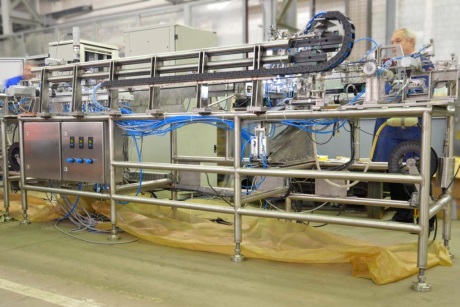Russia develops remote welding for MOX fuel
13 November 2014
Nikimt-Atomstroy has developed and manufactured a remotely operated welding system for the production of mixed uranium-plutonium oxide (MOX) fuel assemblies for nuclear power units.
 |
| Nikimt-Atomstroy's remotely operated welding system (Image: Rosatom) |
Nikimt-Atomstroy is the Moscow-based civil engineering subsidiary of Russian state nuclear corporation Rosatom.
The new system will be used at the commercial MOX fuel fabrication facility established by Mining and Chemical Combine (MCC), another Rosatom subsidiary, in Zheleznogorsk, Siberia earlier this year.
In a statement last week, Nikimt-Atomstroy said the new system can feed and fix distance-wire onto fuel rods, ensuring space between the rods in the fuel assembly. This prevents the rods coming into contact and producing excess heat that could lead to damage. The system's control equipment synchronizes more than 200 sensors and pneumatic cylinders. Each welding unit is equipped with two colour cameras, enabling the operator to control the wire feeding and welding process.
The system "eliminates the need for human presence in the area of work with highly enriched MOX fuel," the company said.
Russia has no commercial reactors using MOX fuel, but its BN-800 fast neutron reactor will use MOX fuel. Fuel loading of the unit was completed in July.
The Zheleznogorsk facility was built as part of Russia's 'Proryv', or Breakthrough, project to enable a closed nuclear fuel cycle. The ultimate aim is to eliminate production of radioactive waste from nuclear power generation.
MCC said on 16 September that the facility had produced its first industrial batch – 10 kg - of MOX fuel. Tablets of the MOX fuel will enter serial production for use at the BN-800 fast neutron reactor, or unit 4 at the Beloyarsk plant, which is in the Sverdlovsk district.
Researched and written
by World Nuclear News